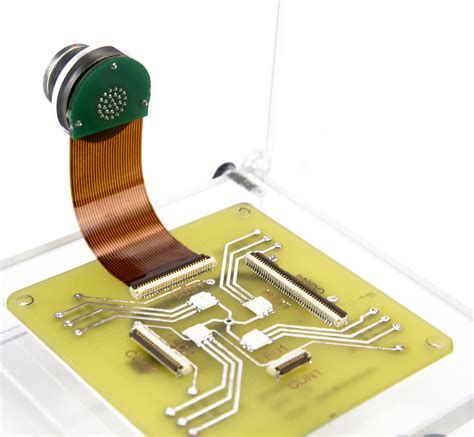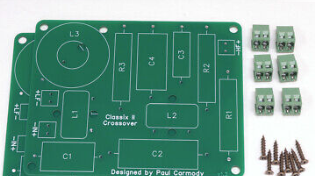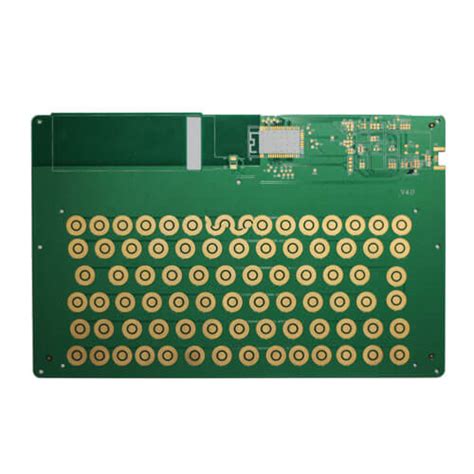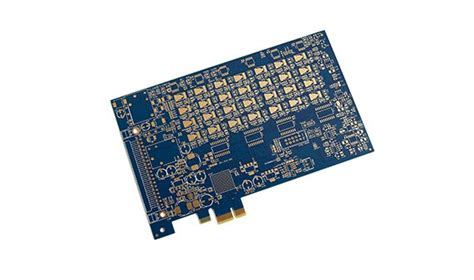Mastering Board Assembly: Techniques for Flawless Execution
Key Takeaways
Mastering pcb assembly is essential for anyone aiming to produce high-quality pcba products. Understanding the core principles of board assembly can significantly impact the effectiveness of your projects. Throughout this guide, we have emphasized the importance of selecting the right materials and tools, as they form the foundation of a successful assembly process. Employing step-by-step techniques ensures that each component is placed with precision, minimizing potential errors. By following best practices, you can enhance both efficiency and accuracy, which are critical in any assembly environment. Awareness of common mistakes and their preventive measures will further improve your execution and lead to superior results. Lastly, adopting advanced tips from industry experts can elevate your skills even further, enabling you to tackle complex projects with confidence. By focusing on these key elements, you set yourself up for success in board assembly, ensuring that every venture results in a flawless finish.
Introduction to Board Assembly: An Overview
Board assembly, specifically PCB assembly or PCBA, is a crucial process in electronics manufacturing. It encompasses the integration of various electronic components onto a printed circuit board (PCB) to create functional devices. The precision of pcb assembly is vital, as even minor errors can lead to significant operational failures. To establish a solid foundation in this field, understanding the basic principles and stages of assembly is essential.
The process typically begins with a thorough preparation stage, during which essential tools and materials are gathered. A well-equipped workstation will significantly enhance the efficiency of your pcba efforts. Commonly used tools include soldering irons, magnifying glasses, and multimeters among others. Ensuring that everything is ready before starting helps in maintaining focus and avoiding distractions during the actual assembly.
As you delve into board assembly, be attuned to the various techniques utilized to secure components effectively onto the PCB. Staying informed about industry best practices—such as maintaining a clean workspace and regularly checking alignment—can contribute substantially to achieving flawless execution.
“Good preparation turns potential problems into manageable challenges.”
Recognizing the importance of this initial stage can dramatically affect the success of your final product. Each aspect plays a role: from component selection to soldering techniques and post-assembly inspections.
Table 1 provides an overview of essential tools required for effective board assembly:
| Tool | Purpose |
|---|---|
| Soldering Iron | For joining electrical components |
| Multimeter | To test electrical integrity |
| Magnifying Glass | For inspecting small components |
| Tweezers | For placing tiny components with precision |
By grasping these foundational concepts and techniques, you can embark on your journey towards mastering pcb assembly with confidence and competence. This initial overview sets the stage for more detailed explorations into advanced assemblies and common pitfalls that should be avoided as you progress toward expertise.
Essential Tools and Materials for Board Assembly
When embarking on the journey of pcb assembly, equipping yourself with the right tools and materials is crucial to achieving optimal results. One of the fundamental components is the printed circuit board (PCB) itself, made from high-quality substrates that provide durability and conductivity for electronic circuits. In addition, a reliable soldering iron is essential for ensuring strong connections between components. The solder used in this process should be chosen carefully; lead-free solder is increasingly popular for its environmental benefits.
Other necessary tools include precision tweezers, which allow for meticulous placement of small parts on the board, and a multimeter to ensure that electrical connections are sound. A pick-and-place tool can significantly reduce assembly time by facilitating the accurate positioning of components. Furthermore, using a magnifying lamp or microscope can enhance visibility when working with intricate designs typical in pcba.
Additional materials such as anti-static mats and wrist straps protect sensitive electronic parts from electrostatic discharge, which can cause irreversible damage. It’s also helpful to have various types of adhesives on hand, particularly if your project involves mounting components that require additional support beyond solder.
Each of these tools plays an integral role in the board assembly process and contributes significantly to achieving precision and efficiency during pcb assembly projects. Proper selection and usage of these tools not only simplify your workflow but also enhance the overall quality of your finished product, ensuring that each project meets industry standards for performance and reliability.
Step-by-Step Techniques for Flawless Execution
Achieving flawless execution in pcb assembly requires a systematic approach and attention to detail. Begin by meticulously organizing essential tools and materials, which is crucial for smooth workflow. Start with a clean workspace and gather all components required for the pcba. Next, lay out the circuit board and perform a thorough inspection for any signs of damage or misalignment.
Carefully follow the schematics provided in your project to ensure that each component is placed correctly. Utilizing high-quality soldering techniques is essential; avoid overheating components as this may compromise their functionality. Pay special attention when soldering connections, ensuring each joint is solid and free of moisture, which can lead to short circuits.
To enhance precision during assembly, incorporate a inspection phase after the placement of critical components. Using magnifying tools can be useful here to detect any potential mistakes that might have been overlooked at first glance. Conclude your assembly process by conducting electrical tests on the assembled board to confirm that everything operates correctly before proceeding to further stages.
By adopting these step-by-step techniques, you not only improve your skills but also ensure a higher quality in your final product, paving the way for mastering the art of board assembly while delivering outstanding results within every project you undertake.
Best Practices to Enhance Precision and Efficiency
When it comes to pcb assembly, precision and efficiency are paramount for achieving outstanding results. One of the first steps in enhancing precision is to ensure that the workspace is well-organized, with all necessary tools and materials easily accessible. This minimizes distractions and reduces the likelihood of errors during the assembly process. Implementing a systematic approach where each pcba is handled with care can also significantly improve workflow efficiency.
Utilizing high-quality components is essential; they not only contribute to a reliable end product but also simplify the assembly steps. Establishing a routine for regular maintenance of tools ensures they perform optimally, allowing for smoother operations during assembly. Stay vigilant about component orientation and placement, as these factors can drastically affect performance; using alignment tools or templates can aid in achieving flawless execution.
In addition, conducting thorough pre-assembly checks can identify potential issues before they escalate into costly mistakes. Training team members in effective communication practices fosters an environment where questions are encouraged, further enhancing precision. Lastly, consider integrating technology solutions, such as automated inspection systems, to augment quality control processes and streamline repetitive tasks within your pcb assembly projects. By focusing on these best practices, you can master the art of board assembly while ensuring both precision and efficiency in every project you undertake.
Common Mistakes in Board Assembly and How to Avoid Them
One of the most critical aspects of pcb assembly is avoiding common pitfalls that can lead to costly mistakes and inefficiencies. A frequent error is improper alignment of components, which can result in unusable pcba boards. To prevent this, ensure that you have a reliable positioning system in place. Additionally, neglecting to check component placements can lead to disastrous outcomes. Before applying any solder, double-check that each piece is in its designated spot; this simple step can save you time and resources. Another common mistake involves inadequate solder application. Too much or too little solder can affect the functionality of the assembly. Adopting an appropriate technique for applying solder will enhance precision and improve the overall quality of your pcb assembly projects. Lastly, it is essential to maintain a clean workspace; clutter can lead to disorganization and an oversight of essential details. By addressing these common issues proactively, you will ensure flawless execution in your board assembly processes and elevate the quality of your final product.
Advanced Tips from Industry Experts
Achieving excellence in pcb assembly involves more than just following basic procedures; it requires an understanding of advanced techniques that can elevate your work. Industry experts emphasize the necessity of a meticulous approach when assembling printed circuit boards (PCBA). One key strategy is to ensure that all components are thoroughly inspected before assembly. This preemptive measure helps identify any discrepancies that could lead to costly errors during the pcb assembly process. Additionally, leveraging specialized tools, such as automatic placement machines and high-precision soldering equipment, can significantly enhance the quality of your output.
Another noteworthy insight is the importance of maintaining a clean workspace. Dust and contaminants can dramatically affect the integrity of connections on a PCBA, so it’s vital to keep surfaces free from debris. Experts recommend implementing a routine cleaning process as part of your assembly protocol, which can prevent issues before they arise.
Furthermore, staying updated with the latest trends and technological advancements in pcb assembly can provide a competitive edge. Regular training sessions and workshops not only hone skills but also introduce new methodologies that can streamline production lines and improve overall efficiency. By incorporating these advanced tips into your pcba practices, you elevate not just your individual skills but also contribute to achieving higher standards within your projects.
Quality Control: Ensuring the Integrity of Your Assembly
In the realm of pcb assembly, maintaining high standards of quality control is paramount to ensure the integrity and functionality of your projects. The significance of rigorous quality assurance processes cannot be overstated, particularly in pcba where even minor discrepancies can lead to substantial consequences. To uphold quality throughout the assembly process, start by establishing a systematic approach that includes regularly scheduled inspections and adherence to defined standards. Use calibrated tools and equipment to assess various aspects such as solder joints, component placements, and overall board integrity.
Integrating automated inspection methods can further enhance accuracy in identifying defects that human operators may overlook. Techniques such as Automated Optical Inspection (AOI) and X-ray inspection are especially beneficial in assessing complex assemblies where hidden defects may exist. Additionally, training personnel on best practices not only enhances their skills but also fosters a culture of excellence within the team.
Regular analysis of feedback loops and defect tracking allows for continuous improvement, ensuring that lessons learned from past projects translate into better outcomes over time. By prioritizing each step from design through assembly and testing phases, companies can build robust products that not only meet specifications but also exceed customer expectations. Thus, embedding quality control deeply into the fabric of the pcb assembly process lays a strong foundation for achieving flawless execution in every project.
Final Thoughts: Mastering the Art of Board Assembly
In the world of pcb assembly, achieving precision and efficiency is paramount. The techniques and insights shared in this guide are instrumental for anyone looking to master pcba skills. Remember that successful assembly is not just about following steps; it involves understanding the nuances of each component and their interactions. As you refine your techniques, focus on the essential tools and materials, as they can significantly influence the outcome of your projects. Regular practice helps in developing a keen eye for detail, essential for avoiding common errors that can derail an assembly process. Engage with industry experts and continuously seek advanced tips to further enhance your abilities. By committing to quality control measures and being aware of potential pitfalls, you can ensure the integrity of every board you assemble. Ultimately, mastering the art of board assembly not only enhances your skill set but also elevates the quality of your work, leading to more successful projects and satisfied clients. Your journey in pcb assembly is just beginning; embrace the learning process and strive for excellence with every new challenge you undertake.
Conclusion
Mastering pcb assembly involves more than just following a set of instructions; it requires an understanding of various techniques and the ability to apply them effectively. From the initial planning phase to the final quality checks, a meticulous approach will greatly enhance the outcomes of your pcba projects. By employing essential tools and adhering to best practices, you can significantly reduce errors while boosting efficiency. Remember that even seasoned professionals benefit from revisiting fundamental principles, as precision and attention to detail are crucial in every step of assembly. Emphasizing these skills not only helps in achieving flawless execution but also builds a strong foundation for more advanced techniques. As you refine your abilities, keep an open mind for continuous learning, allowing you to adapt to new technologies and methodologies in the evolving field of board assembly.
FAQs
What is PCB assembly?
PCB assembly, or Printed Circuit Board Assembly, is the process of attaching electronic components to a printed circuit board (PCB) to create a functional electronic assembly.
What materials are commonly used in PCBA?
Common materials used in PCBA include substrates like FR-4, various types of solder (lead-free or leaded), and electronic components such as resistors, capacitors, and integrated circuits.
How can I ensure the quality of my board assembly?
To ensure quality in your board assembly, implement strict quality control measures, including thorough inspection processes, using proper soldering techniques, and validating component placements with tools like visual inspections or automated optical inspections.
What are the most common mistakes made during PCB assembly?
Common mistakes during PCB assembly include incorrect component placements, insufficient soldering, and overlooking quality control measures. These can lead to malfunctions in the final product.
How can I improve my skills in board assembly?
Improving your skills involves continuous learning and practice. Regularly review industry best practices, seek feedback from peers, and stay updated on new technologies in the field of pcba.







